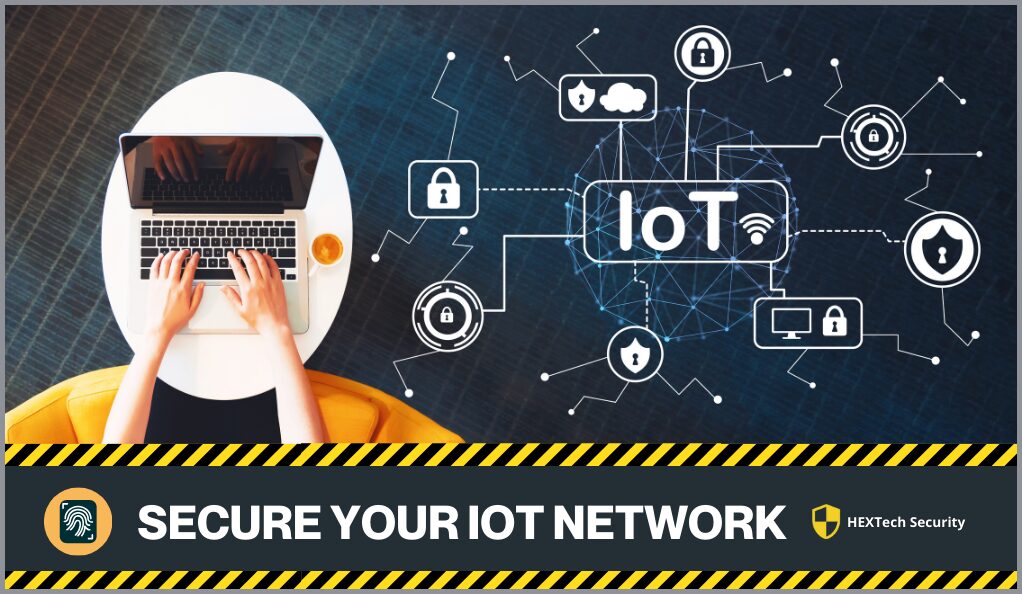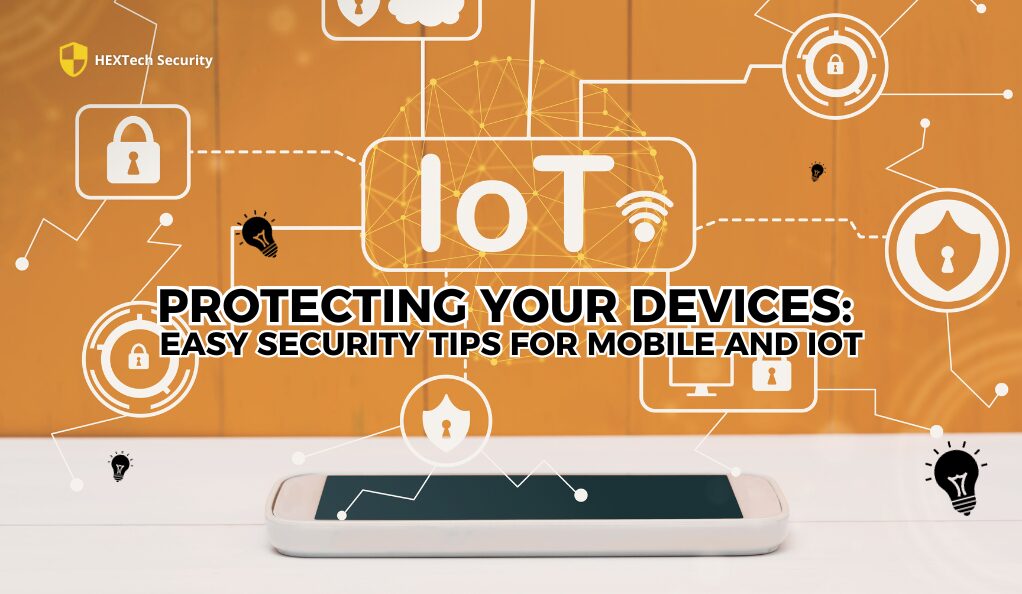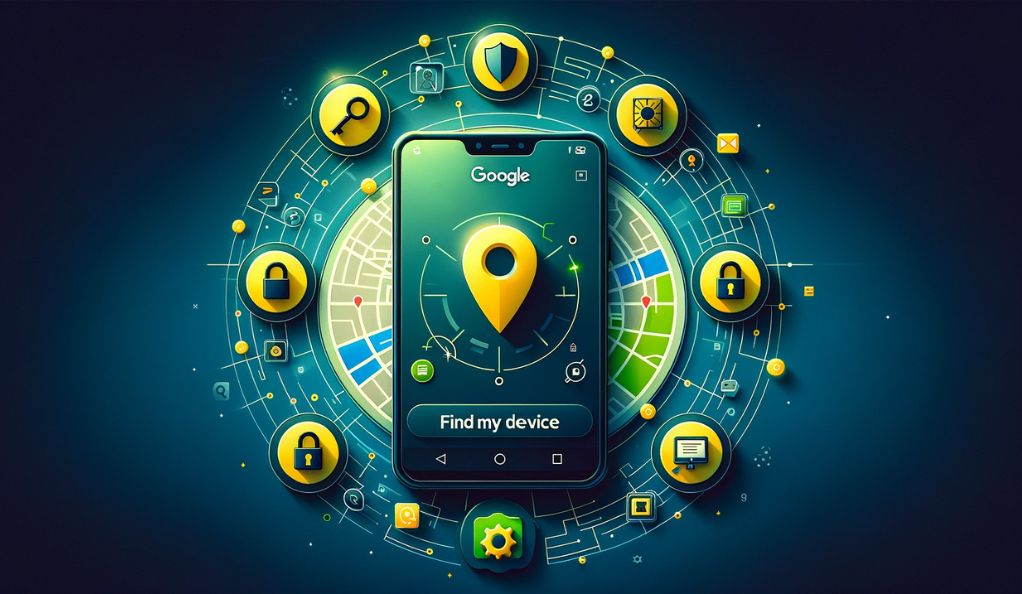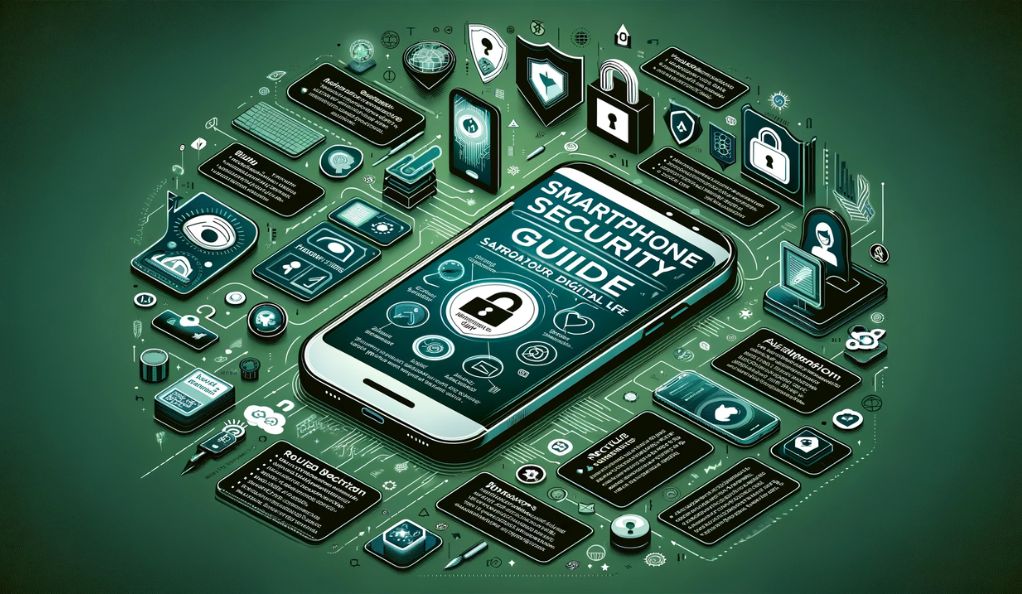In today’s connected world, our reliance on mobile phones and IoT (Internet of Things) devices has never been greater. Yet, this dependence exposes us to digital vulnerabilities. This guide is dedicated to providing you with simple yet effective strategies to fortify your devices against cyber threats.
Understanding Mobile and IoT Security Risks
The Importance of Device Security
Mobile phones and IoT devices are treasure troves of personal information. This data, if fallen into the wrong hands, can lead to serious privacy breaches. Additionally, since these devices often connect to your home or office networks, they can serve as gateways for broader network infiltrations.
Common Threats
- Malware and Viruses: Malicious software can damage or compromise your device.
- Unauthorized Access: Hackers can gain control over devices, leading to privacy violations.
- Data Breaches: Your sensitive information may be exposed in a breach.
Basic Security Measures
Regular Updates
One of the simplest yet most effective ways to protect your devices is by keeping their software up-to-date. Manufacturers often release updates that include security patches to fix vulnerabilities that could be exploited by hackers.
- Why Updates Matter: Each update not only enhances functionality but also fortifies security. Cyber attackers frequently exploit outdated software.
- How to Update: For mobile devices, check for updates in your device’s settings under ‘Software Update.’ For IoT devices, refer to the manufacturer’s guidelines, as the process can vary. It’s advisable to enable automatic updates when available.
How to Update Your Mobile and IoT Devices: A Step-by-Step Guide
Updating Mobile Devices:
- Identify Your Device Type: Determine whether you have an iOS (like an iPhone) or an Android device, as the process differs slightly.
- Access Settings: On your device, open the ‘Settings’ app.
- Find the Update Section:
- For iOS: Go to ‘General’ and then ‘Software Update.’
- For Android: Scroll down to ‘System,’ then tap ‘Advanced’ followed by ‘System Update.’
- Check for Updates: Your device will either automatically check for updates or you may need to select an option to check for updates manually.
- Download and Install: If an update is available, download it, and then install it. Ensure your device is connected to Wi-Fi and is adequately charged or plugged in, as updates can consume significant data and battery.
- Restart if Required: Some updates may require you to restart your device to complete the installation process.
Updating IoT Devices:
- Identify the Device: Know the make and model of your IoT device, as each may have a different method for updates.
- Consult Manufacturer’s Instructions: Refer to the user manual or the manufacturer’s website for specific instructions on updates. This is crucial as IoT devices vary widely in their update processes.
- Access Device Settings: Many IoT devices are controlled via a connected app on your mobile phone or tablet. Open this app and look for a ‘Settings’ or ‘About’ section.
- Check for Firmware Updates: Within the app, look for an option that says ‘Check for Updates’ or ‘Firmware Update.’ Select this to see if any updates are available.
- Download and Install Updates: If an update is available, follow the prompts to download and install it. Ensure your IoT device remains connected to the internet during this process.
- Reboot if Necessary: Some devices may automatically restart after an update, while others may require manual rebooting.
By regularly updating your mobile and IoT devices, you can ensure they are equipped with the latest security patches and features, greatly enhancing your digital security.
Strong Passwords and Authentication
Your first line of defense against unauthorized access is robust passwords and authentication methods.
- Creating Strong Passwords: Use a mix of upper and lower case letters, numbers, and special characters. Avoid common words or easy-to-guess combinations like birthdays.
- Two-Factor Authentication (2FA): This adds an extra verification step beyond just the password. Typically, it involves receiving a code on your phone or email, which you must enter to access your account.
- Password Managers: Consider using a password manager. These tools create and store complex passwords for each of your accounts, so you don’t have to remember them all.
Securing Physical Access
- Lock Screens: Always use a lock screen on your mobile devices. Options include PINs, patterns, fingerprint scans, or facial recognition.
- Secure Storage: When not in use, especially for IoT devices, store them in a secure location to prevent physical tampering.
Public Wi-Fi Caution
- Risks of Public Wi-Fi: Public Wi-Fi networks are less secure, making it easier for hackers to intercept your data.
- Use With Care: Avoid performing sensitive activities like online banking or shopping when connected to public Wi-Fi.
Software Vigilance
- Installing Apps: Only download apps from trusted sources such as official app stores. Check reviews and app permissions before installation.
- Beware of Phishing: Be cautious of emails or messages requesting personal information or urging you to click on unknown links.
By implementing these basic security measures, you can significantly reduce the risk of cyber threats to your mobile and IoT devices. While no system is entirely foolproof, these steps form the foundation of a robust digital security strategy.
Advanced Security Strategies

Encryption
Encryption is a powerful tool in protecting your data’s confidentiality and integrity. It converts data into a code to prevent unauthorized access.
- Understanding Encryption: When data is encrypted, it’s transformed into a format that’s unreadable without a decryption key. This is crucial for sensitive data like login credentials, personal information, and financial details.
- Implementing Encryption:
- Mobile Devices: Most modern smartphones come with built-in encryption capabilities. Ensure it’s activated in your device’s security settings.
- IoT Devices: Check if your IoT devices have encryption options and enable them. If they don’t, consider the security implications before using them for sensitive purposes.
Network Security
Securing the network that your devices connect to is vital in protecting them from external threats.
- Secure Wi-Fi Networks: Use strong, unique passwords for your Wi-Fi networks. Consider separating your IoT devices onto a different network from your main devices to limit potential breaches.
- Firewalls: Employ firewalls to monitor and control incoming and outgoing network traffic based on predetermined security rules.
- Virtual Private Networks (VPNs): A VPN encrypts the data sent over your network, making it harder for hackers to intercept. This is particularly useful when using public Wi-Fi.
Advanced Authentication Techniques
Beyond basic passwords and 2FA, there are more sophisticated authentication methods.
- Biometric Authentication: Fingerprints, facial recognition, or retina scans offer a higher level of security as they are unique to each individual.
- Behavioral Biometrics: Some systems can recognize patterns in behavior (like typing speed or device handling) and use this as an additional layer of authentication.
Regular Security Audits
Conducting regular security audits is essential in identifying potential vulnerabilities in your network and devices.
- Check for Vulnerabilities: Regularly scan your devices and network for vulnerabilities. There are tools available that can help automate this process.
- Update Security Policies: Based on the audit findings, update your security policies and procedures to address any identified weaknesses.
IoT Device Management
IoT devices can be particularly vulnerable due to their varied nature and the different ways they interact with networks.
- Firmware Updates: Regularly check for and install firmware updates for IoT devices.
- Device Segmentation: Consider segmenting your IoT devices into different network zones, limiting the ability of a hacker to move laterally across your network.
By adopting these advanced security strategies, you significantly enhance the protection of your mobile and IoT devices against sophisticated cyber threats. These strategies require a more in-depth understanding of digital security but are crucial in an environment where threats are constantly evolving.
IoT-Specific Security Tips
In the rapidly expanding world of the Internet of Things (IoT), security often lags behind innovation. As IoT devices become increasingly prevalent in our homes and workplaces, it’s vital to understand how to secure them effectively.
Device Management
Proper management of IoT devices is key to maintaining a secure network environment.
- Regular Audits: Conduct periodic checks to inventory your IoT devices. Ensure you know what is connected to your network at all times.
- Disabling Unnecessary Features: Many IoT devices come with features that may not be necessary for their function but can pose security risks. Disable any unused features to minimize vulnerabilities.
Secure Your IoT Network

Your IoT devices are only as secure as the network they’re connected to.
- Separate Networks: If possible, keep your IoT devices on a separate network from your main devices. This limits the potential damage if one of your IoT devices is compromised.
- Strong Network Security: Ensure your IoT network is protected with strong, unique passwords and consider using advanced encryption methods.
Update Firmware Regularly
Manufacturers often release firmware updates that include critical security patches.
- Check for Updates: Unlike traditional computing devices, IoT devices may not always alert you to available updates. Regularly check the manufacturer’s website or app for updates.
- Automate Updates: If your IoT device has an option for automatic updates, enable it to ensure you’re always running the most secure version of the firmware.
Smart Home Security
As homes become smarter, they also become more attractive targets for cyber attacks.
- Securing Smart Home Devices: Apply the same security measures for your smart home devices as you would for any other IoT device – strong passwords, network segmentation, and regular updates.
- Voice Command Control: If your devices are controlled by voice commands, be cautious about what information you speak aloud and consider disabling this feature when not in use.
Be Cautious with IoT Device Permissions
Just like apps on your phone, IoT devices often request permissions to access different data or features.
- Review Permissions: Regularly review the permissions granted to each device. If a device doesn’t need access to certain data for its functionality, revoke that permission.
- Understand the Implications: Be aware of the data your IoT devices are collecting and how it’s being used. Read privacy policies and terms of service to understand the implications for your personal data.
By following these IoT-specific security tips, you can better protect your devices from the unique threats they face in the connected world. While IoT devices bring convenience and efficiency, they also require a heightened level of security awareness and action.
Mobile Device Protection
Mobile devices, such as smartphones and tablets, have become indispensable in our daily lives. They hold a wealth of personal and often sensitive information, making them a prime target for cyber threats. Here are essential tips to protect your mobile devices:
Install Reputable Antivirus Software
- Choosing Antivirus Software: Select a trusted antivirus app from your device’s app store. Look for apps with high ratings and positive reviews.
- Regular Scans: Set your antivirus software to run regular scans. This helps detect and remove any malicious software that might have infiltrated your device.
Use Secure Lock Screen Options
- Lock Screens: Utilize a secure lock screen option such as a PIN, pattern, or biometric options like fingerprint scanning or facial recognition. This simple step can prevent unauthorized physical access to your device.
- Automatic Lock: Set your device to automatically lock after a short period of inactivity.
Safe Browsing and App Practices
- App Permissions: Be cautious with the permissions you grant to apps. Only approve permissions that are necessary for the app’s functionality.
- Download Apps Wisely: Only download apps from official app stores, and avoid third-party app stores or links from unknown sources.
- Safe Browsing Habits: Use a secure browser, avoid clicking on suspicious links, and don’t download files from untrusted websites.
Update Your Operating System and Apps
- Regular Updates: Keep your operating system and all apps up to date. These updates often include critical security patches.
- Automatic Updates: Where possible, enable automatic updates to ensure you’re always running the latest software.
Be Wary of Public Wi-Fi

- Risks of Public Wi-Fi: Public Wi-Fi can be a hotspot for cyber threats. Avoid conducting sensitive transactions, like online banking, when connected to public networks.
- VPN Use: Consider using a Virtual Private Network (VPN) when connecting to public Wi-Fi to encrypt your data transmission.
Regular Data Backups
- Backup Your Data: Regularly back up the data on your mobile device. This can be done via cloud services or by connecting your device to a computer.
- Recovery Options: Ensure you have a way to remotely wipe your device’s data in case it is lost or stolen. This can prevent sensitive data from falling into the wrong hands.
By implementing these mobile device protection strategies, you significantly lower the risk of security breaches and data loss. Remember, the security of your mobile device is not just about protecting the device itself but also safeguarding the sensitive information it contains.
Final Thoughts and Best Practices
As we conclude this guide on securing mobile and IoT devices, it’s important to remember that technology and cyber threats are constantly evolving. Staying vigilant and informed is key to maintaining strong digital security. Here are some final best practices to keep in mind:
Stay Informed About Security Trends
- Keep Learning: The digital landscape is always changing. Regularly educate yourself about the latest security threats and protection strategies.
- Subscribe to Security Blogs or Newsletters: This can be a convenient way to stay updated on the latest cybersecurity developments.
Regular Backups
- Data Backups: Regularly back up the data on your devices. This ensures that you can recover your information in case of device failure, loss, or a cyber attack.
- Multiple Backup Methods: Consider using both cloud services and physical storage devices for backups.
Practice Caution with Personal Information
- Be Cautious: Avoid sharing sensitive personal information online, especially on public platforms or unsecured networks.
- Phishing Awareness: Be alert to phishing attempts, which often come in the form of suspicious emails or messages.
Encourage Security Awareness in Your Community
- Share Knowledge: Educate your friends, family, and colleagues about the importance of digital security and how to implement it.
- Create a Security Culture: In the workplace, advocate for regular security training and best practices.
Regularly Review and Update Your Security Practices
- Security Audits: Periodically review your security settings and practices to ensure they align with the latest security standards and your current needs.
- Adapt and Improve: Be willing to adapt and improve your strategies as new threats emerge and new security technologies become available.
Remember, Security is a Continuous Process
- Ongoing Effort: Digital security is not a one-time task but an ongoing process of staying informed, vigilant, and proactive.
- Balance Security with Usability: While it’s important to be secure, ensure that your security measures do not overly complicate your use of technology.
By following these best practices, you can create a robust digital security framework for your mobile and IoT devices. Remember, in the realm of cybersecurity, being proactive rather than reactive is crucial. Stay vigilant, stay informed, and keep your digital life secure.
Conclusion
As we navigate through an increasingly digital world, the importance of securing our mobile and IoT devices cannot be overstated. This guide has highlighted essential strategies, from basic measures like regular updates and strong passwords to more advanced tactics like network segmentation and encryption. Remember, each step you take, no matter how small, significantly contributes to your overall digital security. By implementing these practices, you not only protect your devices but also safeguard your personal information and privacy.
The journey to robust digital security is ongoing and ever-evolving. Staying informed, vigilant, and proactive is crucial in this dynamic landscape. Embrace these security measures as part of your daily digital routine, and encourage those around you to do the same. Together, we can create a safer digital environment for ourselves and future generations.








